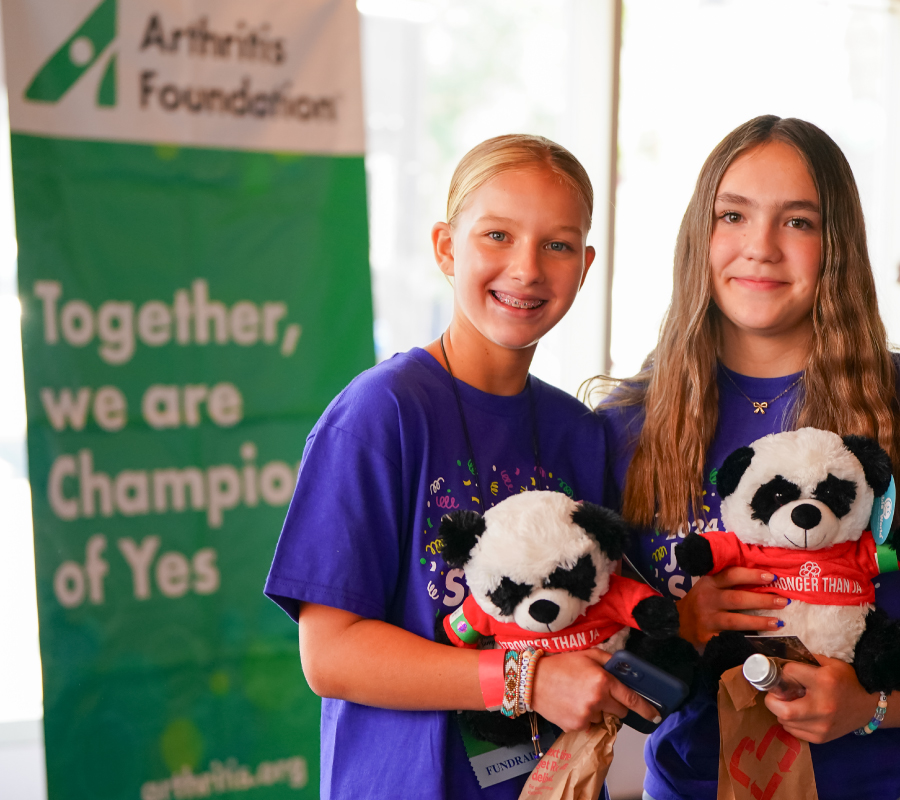Juvenile Dermatomyositis
Juvenile dermatomyositis is a rare childhood autoimmune disease that involves muscle weakness and skin rash.
Updated July 29, 2024
Juvenile dermatomyositis (JDM) is a rare autoimmune disease that causes inflammation of the blood vessels, muscles and skin. It affects about three children in a million, occurring mostly between the ages of 5 and 10. Girls are more likely than boys to get the disease.
Experts don’t know exactly what causes JDM, but genes are involved — the HLA gene is present in children who develop dermatomyositis — and they believe environmental factors, such as infection or exposure to certain chemicals or medications, may lead to the disease. In this autoimmune disease, the immune system, which is supposed to fight invaders and germs, instead attacks the body’s own tissues.
Symptoms
Inflammation of the blood vessels (vasculitis) causes the primary symptoms of JDM: skin rash and muscle weakness.
The first sign of JDM is usually a red or purplish rash. The rash will appear around the eyes and cheeks first, as well as the nails, elbows, knees, chest and back.
Muscle weakness may begin at the same time as the skin rash or develop days, weeks or months after. Weakness occurs on both sides of the body and can make climbing stairs, standing up from a chair or raising their arms difficult. Body parts affected include neck, shoulders and hips, as well as back, stomach, upper arms and thighs.
Other signs of JDM may include
- Falling more often.
- Weak voice (dysphonia).
- Problems swallowing (dysphagia).
- Muscle pain.
- Hard white lumps under the skin (calcinosis).
- Feeling very tired or run-down (fatigue).
- Joint pain or stiffness.
- Spiking fever.
Health Effects
The following complications can happen if the JDM is untreated or not treated aggressively enough.
- Joint Contractures. When muscles shorten, either from tissue scarring or in some cases from calcium deposits, they can pull joints into a bent position. Daily stretching and physical therapy can prevent permanent damage from joint contractures.
- Skin Ulcers. Poor circulation from blood vessel inflammation can cause painful, open sores on the skin.
- Digestive Problems. Inflammation of the blood vessels in the intestinal tract can cause ulcers and other digestive issues. Stomach pain or blood in the stool requires an immediate call to the doctor.
JDM affects roughly 3,000-5,000 kids in the United States.
Most cases occur between the ages of 5 and 10.
Girls are twice as likely to be affected as boys.
About 1 in 5 children with JDM have joint symptoms.
Treatments
- Corticosteroids, which are powerful anti-inflammatory drugs, are often used first because they work quickly. But due to side effects, they are not used for a long time. Once symptoms begin to improve, the doctor will drop the dosage and add or use other medications instead.
- Methotrexate are often used along with corticosteroids. It is considered the best initial treatment for most children. It may be given by pill or injection.
- Intravenous immunoglobulin (IVIg) contains healthy antibodies from blood donors. They can block harmful antibodies that attack muscle and skin.
- Other medications that may be used to treat inflammation from juvenile dermatomyositis include cyclosporine, azathioprine, tacrolimus, hydroxychloroquine or anti-TNF biologics.
- Physical Therapy. A physical therapist can help teach exercises to maintain strength, improve flexibility and prevent muscle wasting (atrophy). Physical therapy is especially helpful for kids with muscle stiffness or joint contractures.
- Speech Therapy. If the throat muscles become weak, speech therapy can help improve speech and swallowing.
Self-Care
A healthy lifestyle that includes skin protection, a nutritious diet, exercise, and stress relief can help relieve symptoms and manage disease.
- Sun protection may help manage skin and muscle symptoms. Use sunscreen, wear wide-brimmed hats and protective clothing, and avoid sun exposure during peak hours.
- Regular exercise keeps muscles strong and flexible and prevents muscle weakening and atrophy. Follow an exercise program established by a physical therapist.
- Mind-body techniques, as such meditation and yoga, may help with the psychological and emotional impact of having a chronic illness. Friends, family and trained professionals (such as licensed therapists and psychologists) can also provide support during tough times.

Connect with Us
Get the latest news and updates on our Juvenile Arthritis resources and events. Sign up by providing your information in the form.
